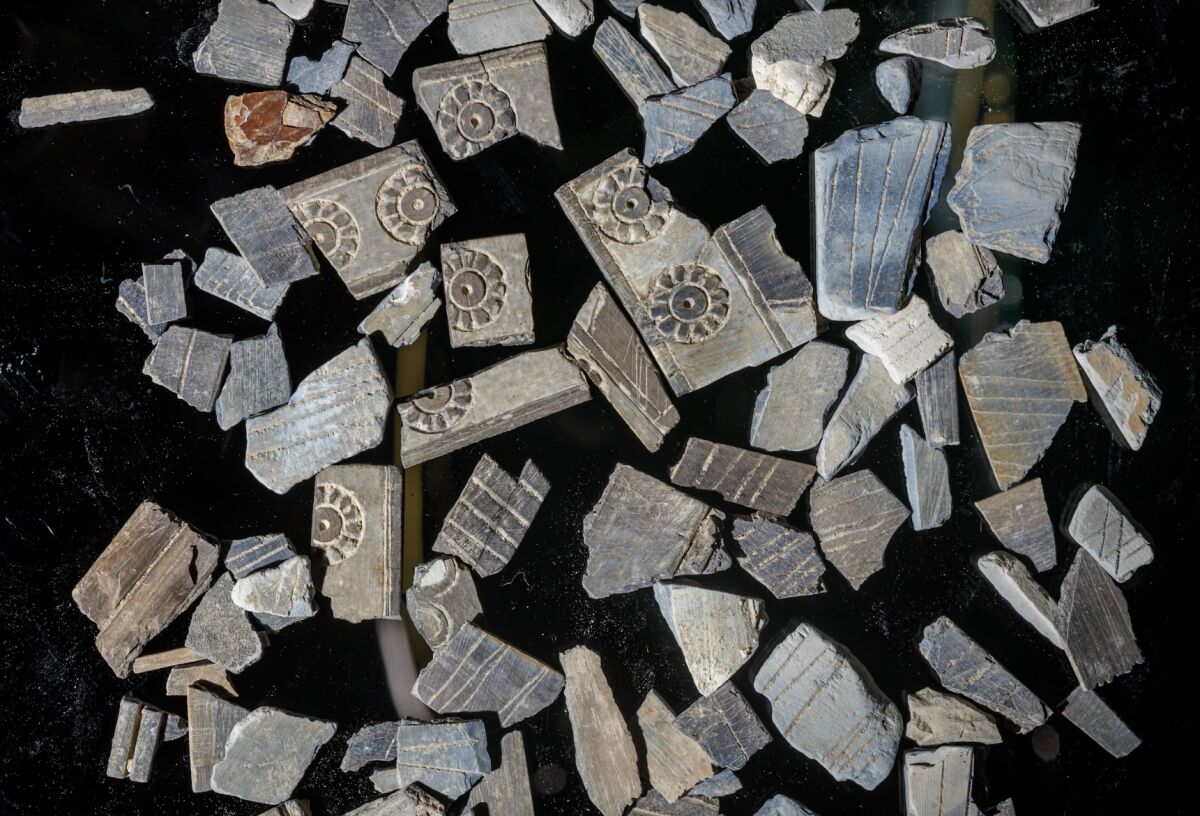Rare First Temple-Period Ivories Discovered in the City of David
Around 1,500 rare and ornate decorated ivory fragments were discovered in the City of David archaeological site known as the Givati Parking Lot excavations, located just southeast of the Old City, in an excavation led by Prof. Yuval Gadot of Tel Aviv University and Dr. Yiftah Shalev of the Israel Antiquities Authority. A press release regarding the discovery was released Monday.

The delicate sherds, which had been crushed and burned, appear to have been originally housed in a monumental royal structure until the Babylonian destruction of 586 b.c.e. Experts carefully reassembled the fragments into 12 small square plates that would have decorated a lavish wooden throne or chair.
https://www.youtube.com/watch?v=pJCT7MAPUnY
Sourced from elephant tusks, ivory of this type was a luxury item that was used as an inlay for thrones and furniture. The material took great skill to work with, especially to achieve such intricate decorations as seen on these plates. Both Assyria’s powerful capital, Nimrud, and the northern Israelite capital, Samaria, have had similar discoveries dating to the First Temple period. However, this is the first time this type of ivory—one of the most expensive raw materials in the ancient world (even more so than gold!)—has been found in Jerusalem, providing insight into the wealth and status of the city. In the words of Dr. Shalev: “We were already aware of Jerusalem’s importance and centrality in the region in the First Temple period, but the new finds illustrate how important it was and places it in the same league as the capitals of Assyria and Israel. The discovery of the ivories is a step forward in understanding the political and economic status of the city as part of global administration and economy.”

Biblical discussion of ivory also connotes grandeur and royalty, and its mention of ivory in Jerusalem parallels this discovery. In 1 Kings 10:18, Solomon is mentioned making a great throne of ivory. “Moreover the king made a great throne of ivory, and overlaid it with the finest gold.” Given that an enormous throne cannot be carved whole from a large piece of ivory, this verse is clearly understood to represent the same picture presented by the current discovery—that this was a royal throne covered in ivory inlays. Psalm 45:9 describes “ivory palaces,” and various other verses describe the construction of ivory structures in Israel, including the “ivory house” of Ahab (1 Kings 22:39) and “houses of ivory” in general (Amos 3:15). Amos 6:4 condemns the nobility of those in Samaria and Zion (i.e. the City of David—2 Samuel 5:7) as they that “lie upon beds of ivory.”
Professor Gadot and Dr. Shalev explain: “The assemblage of ivory discovered in the City of David was probably imported, and originally made by artisans from Assyria. The ivories may have come to Jerusalem as a gift from Assyria to Jerusalem’s nobility. Following a comparison with complete objects that appear on wall plaques from the palace of the Assyrian King Sennacherib at Nineveh, we suggest that the ivory plaques from Jerusalem were originally inlaid in a couch-throne, and we may imagine that it had been situated on the second floor of the opulent structure.”

The proposition that such fine ivory furniture must have been a gift from Assyria, rather than the handiwork of local craftsmen, is a fairly typical archaeological conclusion. Still, the ivory is unique in that it does not have any animal or mythological figures depicted (in contrast to the examples from Samaria and Assyria). This could have been a conscious choice by Jerusalem’s elite—or perhaps, these Jews at the time actually did carve the ivory themselves. This question is part of a larger unresolved archaeological debate on the capabilities of local craftsmen in working with such fine materials (such as ivory) during this part of the First Temple period.

The patterns on the panels were mostly the same, depicting rosettes, trees, lotus flowers and geometric patterns. These symbols appear throughout Judah. The rosettes are notably similar to the seal impressions on jar handles found at this same archaeological site. These seals were associated with Judah’s royal economy, adding to the evidence of the opulence of the kingdom of Judah at this time.
iaa director Eli Eskosido summarized: “These discoveries breathe life into the ancient stones. The realization that the material culture of the social elites in Jerusalem in the First Temple period did not fall short of—and perhaps even exceeded—that of the other ruling centers in the Ancient Near East, demonstrates the status and importance of Jerusalem at that time.”
https://www.youtube.com/watch?v=pJCT7MAPUnY